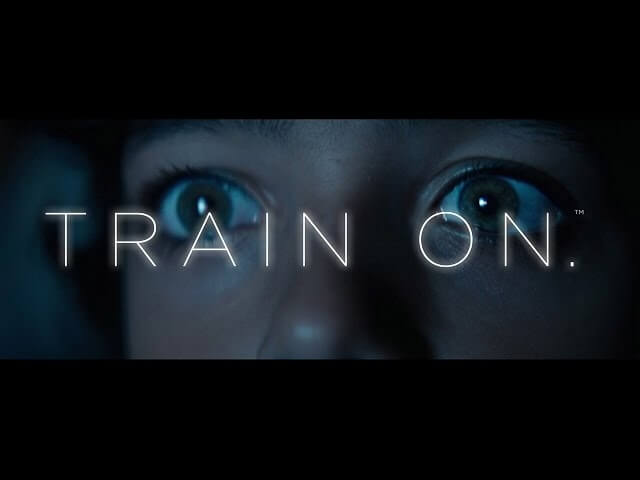One of the more memorable moments to come out of Super Bowl 50 was a cinematic ad featuring people in various circumstances and far-flung locales who whisper, “I can do that.” As the commercial builds, we realize what this multifarious group has in common: They’re all Pokémon trainers. With an epic, sweeping intensity, the commercial heralds Pokémon 20, a yearlong celebration commemorating the 20th anniversary of everyone’s favorite pocket-sized monsters.
For a game that launched a multibillion-dollar phenomenon, it’s notable how boring the act of playing Pokémon is. Your journey is a long, slow slog with sizable stretches of monotony—trekking through the labyrinthine Rock Tunnel or endlessly zigzagging in tall grass to eke out a few more experience points for your bench of monsters. Some of the greatest prizes along the way, such as a bicycle or a special move that lets you fly from town to town, simply make it less of a hassle to get around. Nothing about the game requires exact timing or quick reflexes. It’s so low-key that a fish can play it.
Yet this commitment to delayed gratification is one of the game’s great strengths. Creator Satoshi Tajiri based Pokémon off of the bug-collecting hobby he’d enjoyed as a child, and the game taps into that collector’s fervor. There’s a sense of accomplishment that comes from sussing out new and exotic creatures as you painstakingly build your team. With 151 such monsters to interact with, there’s an ample but not overwhelming variety. (As it happens, 150 is commonly suggested to be the approximate number of social relationships one person can sustain—a notion first posited by anthropologist Robin Dunbar.)
A slow-and-steady mentality pervades Pokémon’s design. When you win a battle, your Pokémon receives experience points. Enough of these points raise its level, imbuing it with more abilities and greater strength. In other words, the only way to get better is to practice, practice, practice. This is a tedious process, particularly for more experienced Pokémon who require a higher number of points to level up, but the game rewards you handsomely for your loyalty. Many monsters can “evolve” when they reach a certain level, transforming into more powerful and dynamic versions of themselves. These moments of evolution are accompanied by faint surprise on the part of the game’s narrator and the most captivating visuals the system can muster. This ritualization, along with the excitement of a new creature, is a satisfying payoff to the repetition of leveling up.
Pokémon’s narrative echoes this philosophy as well. The beginning stages of the world are peppered with dead ends—a gym with a locked door, inaccessible islands, bushes and boulders blocking your path. Encountering these impasses early on makes it more rewarding when you return to overcome them. Similarly, your journey begins and ends with your mentor Professor Oak and a battle against your childhood rival, giving the game a pleasant circularity. Much as the Pokémon you train increase in value the longer you stay with them, the world of Pokémon is full of potential.
What sustains this inch-by-inch framework is the quantity of decisions you’re required to make as you go. While the overarching story is set, you must regularly make choices along the way. Every time a wild Pokémon appears, you choose whether to capture it or just knock it out and be on your way. Within every battle, you choose which Pokémon to fight with, which attack it will use, and whether to keep it in, swap it out, or use an item. Restrictions provide even more opportunities for choice. You are only able to carry six Pokémon with you, and each Pokémon can only know four moves at a time, giving you the opportunity to mull over an endless array of combinations.
While some of these choices are trivial, others have far-reaching impact. Deciding on a Bulbasaur as your starter Pokémon means you’ll never receive a Charmander or Squirtle unless you trade for it. This choice is repeated several times, in different guises. You can only take one fossil from Mt. Moon, meaning you’ll only get one prehistoric Pokémon down the road. When you defeat a Dojo full of trainers, you must choose either a Hitmonlee or Hitmonchan as your reward. Turning the game’s single Eevee into Vaporeon excludes the possibility of a Jolteon or Flareon. It’s rare to get something for nothing in Pokémon, and that sacrifice makes each prize fulfilling.
Even the game’s ending is anticlimactic. Not the ostensible finale of defeating the Elite Four, where fame, riches, and an interminable credits sequence await you. No, the true ending of Pokémon is when you complete your directive to catch ’em all. For a task that requires hours of coordinated effort and some friends willing to trade monsters with you, the payoff is dismal—just a pat on the back and a piece of digital paper. Yet this weak finish doesn’t detract from the ebullient experience of getting there.
In its 20 years, Pokémon has expanded into a full-fledged media empire, encompassing a long-running TV series, 19 feature-length films, dozens of video games, a card game, a manga series, countless collectibles, and, now, a Super Bowl commercial. As engaging as that ad is, it’s telling that the Pokémon themselves take a backseat, glimpsed only briefly at the end. Instead of highlighting these colorful and captivating monsters, Nintendo chose to celebrate its anniversary by focusing on the human element—a hodgepodge of trainers, alit with excitement, taking their first step toward greatness. Then again, perhaps this shouldn’t be surprising. At its best, as here, Pokémon is more about the journey than the destination.









































